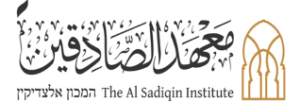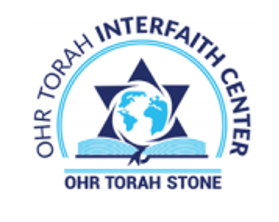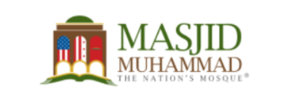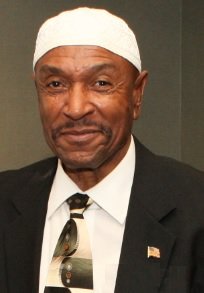By Rebecca Abrahamson
There I was in Morocco, getting immersed in the coexistence model that has thrived there for centuries, yet I ended up in Texas.
Let me explain.
Hosted by the Sharaka Organization and the Association Maroc Coexistence, in conjunction with the Masjid Muhammad of Washington DC, a part of W. Deem Mohammed’s Community, we were a group of Imams, Rabbis, and leaders from the USA and Israel on a five day immersion into the model of coexistence that is Morocco.
Imam Marzuq Abdul Jami, one of the participants, shared some of the history of the African American and Jewish communities of Dallas Texas.
Imam Marzuq is one of the many Imams across the USA who have inherited the legacy of Imam Warith Deen Mohammad, who lead the American Society of Muslims from 1975 – 2008.
 Imam WD Mohammed inherited the mantle of leadership from his father, Elijah Muhammad, but immediately set on a new direction. He renamed the group, changing it from “the Nation of Islam”, eventually settling upon, “The American Society of Muslims”; he began interfaith work. One of the Imams on the delegation explained WD Mohammed’s reasoning for interfaith work, “the whole world is a masjid (mosque), just like we keep our mosque clean, and we do not argue in a mosque, so much we keep planet Earth clean and free of discord. This work is too big for us, so we must engage with people of all faiths to so to speak keep the masjid clean and pleasant.”
Imam WD Mohammed inherited the mantle of leadership from his father, Elijah Muhammad, but immediately set on a new direction. He renamed the group, changing it from “the Nation of Islam”, eventually settling upon, “The American Society of Muslims”; he began interfaith work. One of the Imams on the delegation explained WD Mohammed’s reasoning for interfaith work, “the whole world is a masjid (mosque), just like we keep our mosque clean, and we do not argue in a mosque, so much we keep planet Earth clean and free of discord. This work is too big for us, so we must engage with people of all faiths to so to speak keep the masjid clean and pleasant.”
Imam Marzuq said to me, “My grandmother told me that one day G-d is going to bring His people together, and you should try to be a part of His people, and there I was in Jerusalem last summer meeting you all, and here we are together again!”
He described that in 1976, the Thanks-Giving Square organization in Dallas wanted to bring people of faith together for greater understanding, so they started a program of study; from this stemmed the Interfaith Council that engages with communities including Jewish, Buddhists, Roman Catholic, Methodist, Baptists, Jain, Sikh, Mormon, Hindu, Baha’I and others.
They worked so well together that they called themselves “the faith community”.
Imam Marzuq said the Square has a chapel inspired by a mosque with world famous stained glass windows and at every stop light, a verse from sacred writings is on display. He quipped, “you will stop at a red light and see a Bible verse, turn down the road and stop at another red light and in front of you will be a verse from the Qur’an, so all day long you can see different verses from sacred writings.”
But there was more behind this feeling of goodwill towards Jews and towards interfaith work on the part of Imam Marzuq. He credits members of the Jewish community for helping put an end to lynchings against Black people over a century ago.
The Emancipation Proclamation ended slavery in America in 1863, but the enslaved in Texas weren’t freed until June 19th, 1865, now called Juneteenth and celebrated as a national holiday. But Blacks still suffered poverty and the threat of lynchings. Imam Marzuq told me, “the Ku Klux Klansmen would break into a Black man’s home, rape his wife, and he could do nothing about it.”
The Imam went on to say that members of the Jewish community worked with representatives on two issues – one, enabling Black people to own guns and thus protect their families from intrusion, rape, and murder. Two – they worked with the legislatures to outlaw lynching.
He describes the initial influx of the Jewish community from Germany and Eastern Europe, and explained that members of the Black community would prefer to do business with Jews, “they would go to the Jews first”, and as the Jewish community migrated out of South Dallas, they would sell their homes to Black families, and for some this was their first opportunity to own a home.
I looked into some of the history of what the Imam was describing.
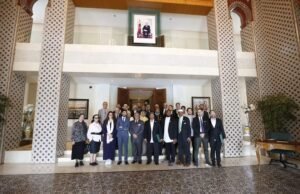 In the early 1920’s the KKK was using social leverage to lobby its members into important political positions such as sheriffs, judges, and legislatures, and at this point, what was being dismissed as an immature band of ruffians was beginning to be a real threat. Instead of ignoring this supposed riff-raff, members of the Jewish community took action.
In the early 1920’s the KKK was using social leverage to lobby its members into important political positions such as sheriffs, judges, and legislatures, and at this point, what was being dismissed as an immature band of ruffians was beginning to be a real threat. Instead of ignoring this supposed riff-raff, members of the Jewish community took action.
In 1923, Jewish leaders Dr. David Lefkowitz, Rabbi of Temple Emmanu-El, and George Bannerman Dealey, publisher of a local newspaper, the Dallas Morning News, publicly deplored the Klan. Soon on its heels, Miriam Ma Ferguson won the 1924 gubernatorial race against Klan-supported Judge Felix D. Robertson. This public stance against the Klan, followed by the ascension of an anti-Klan governor, is said to have helped get Klansmen out of the city, causing its membership to dwindle.
So curtailing some of the Klan’s hateful attacks and the improvement of the lives of many of the members of the Black community was in part thanks to efforts on the part of Jewish leaders to advocate in the legislature, as well as give them the chance to own their own homes, an important source of financial stability for any family.
Decades later, Jewish mayor Annette Strauss paved the way for the African American Museum in Dallas’ Fair Park, located in now predominantly Black South Dallas where Jews first settled. And another Jewish mayor Laura Miller freed up land in West Dallas for new homes and a Goodwill store, creating homes and jobs for low income people, including Blacks, Mexicans and Whites.
So Morocco took me to Texas and to an important part of Jewish as well as African American history!
Imam Marzuq Abdul Jaami is a member of the Thanks-Giving Square Interfaith Council and a founder of Friendship Among Faiths
Rebecca Abrahamson
https://www.facebook.com/613rebecca
http://www.alsadiqin.org
http://www.jewishpress.com/author/rebeccaabrahamson/
